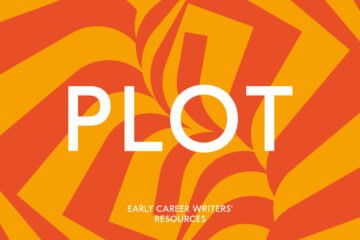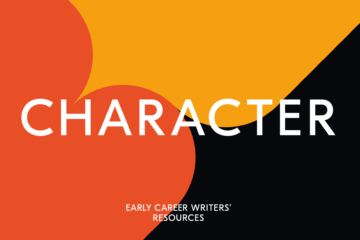By day I’m a Digital Marketing Manager. By night, or whenever I have a spare moment, I’m a writer of science fiction and fantasy novels. Over the years the two sides to my coin have informed and improved each other in unexpected ways.
The brand and organisation consultant Simon Sinek has heavily influenced my approach to marketing: he emphasises authenticity in branding, focusing on the ‘why’ of an organisation or product over the ‘how’ or the ‘what’. It’s a useful approach in that it forces organisations to be honest with themselves, their staff and their customers — which in turn makes it quickly evident if the organisation is trying to hide something.
It’s an attitude which helped my work at FXHOME and more recently has helped with campaigns at the National Centre for Writing. Less obviously, though, it’s also helped me grasp one of the central tenets of writing good fiction.
When writing a story, Sinek’s concept of Why, How and What apply quite clearly:

- What — the core story of the book, combined with its characters
- How — the plot beats, chapter points and the journey of getting from A to B to C
- Why — the themes and ideas of the story
As a younger, newer writer I focused on the first two. It was easy to say what my story was, excitedly outlining the setting and main thrust of the book to anyone who would listen. To take my current novel, The Mechanical Crown, as an example, this could be it’s ‘What’:
It’s a big fantasy adventure in which the main characters go on an epic journey to save the kingdom from an ancient threat.
Sounds like every other fantasy story, right? Much like Sinek’s point about companies describing their products by their ‘what’, this is not inaccurate but it certainly isn’t interesting. It doesn’t even get close to why somebody might want to actually read my book.
How about the ‘how’, then?
It begins with an explorer crossing into a hidden valley, discovering a hidden society. He meets other characters, including a princess and an ex-prisoner. Hunted down by the valley’s elite guard, they are forced to escape the valley by venturing over the deadly northern mountains, towards an unknown fate.
I could go on, but I’ll stop there so as to avoid too many spoilers. More to the point, though, while adding detail to the story makes it slightly more interesting it’s still a mechanical exercise of going from Plot Point A to Plot Point B and so on. No matter how much detail I add, including exciting escapades and amazing locations, it’s still not going to grab people’s interest.
Broken down into essential plot beats, any story will start to feel rote and dull. Yet as an inexperienced writer, the ‘how’ was always my focus when it came to planning and writing: I’d obsess over the plot and how it twisted the story back and forth, building in moments that would hope to be exciting, or sad, or beautiful, or horrific. When I finally wrote the words it would feel flat, and it took me a long while to figure out why.
A story which is written with a focus on plot becomes dry. The novel is simply an overly verbose version of the story treatment or outline. Adding compelling characters helps bind things together, but even then you’ll find the plot — the ‘how’ — pushing those characters around awkwardly, forcing them to do unnatural things and wrenching the reader down paths simply because that’s what was in the Plot Outline document.
When a book, movie or TV show feels ‘wrong’, or ‘jumps the shark’, it’s usually because of a misplaced emphasis on plot. The story has to hit certain beats, because that’s what was decided at some point in its development, and the end result is something calculated and cold and artificial. The writer knows what the story is and how to tell it, but doesn’t know why it should be told in the first place.
Which brings me to the ‘why’. Here’s the ‘why’ for The Mechanical Crown:
What does enforced isolation do to a culture? How do crimes of the past shackle a society, and is there any way of moving forward? When fear and prejudice command every decision, is there a way to avoid the inevitability of war and persecution? Is there a possibility of hope in a country which has long forgotten how to dream?
That’s the ‘why’ of the book. It’s not exhaustive, of course, and readers are likely to discover and form their own notion of its ‘why’, based on their own perspective and influences. For me as the writer, though, that ‘why’ is what drives the creation of the book, chapter-by-chapter. Sure, I have a detailed story outline, and interesting characters. I have exciting action sequences and plot twists. All of that is driven by the themes and ideas, and it’s those that act as a check and motivator throughout the process. Every chapter development and character is serving those ideas, so that the ‘why’ is threaded through every sentence of the book.
A deep understanding of a project’s ‘why’ makes it easier to make critical decisions about the plot and about characters. The ‘why’ serves as both an anchor and compass, guiding you through every decision — big and small — and ensuring that the book is always about something. That converts into resonance for readers, raising the story above being simply a sequence of Things That Happen towards having actual meaning.
Shifting away from an emphasis on plot and focusing instead on themes has been the biggest and most useful evolution of my writing over the last twenty years. Sinek’s ‘Start with Why’ concept was a useful way to illuminate that process and explain why it works.



0 Comments